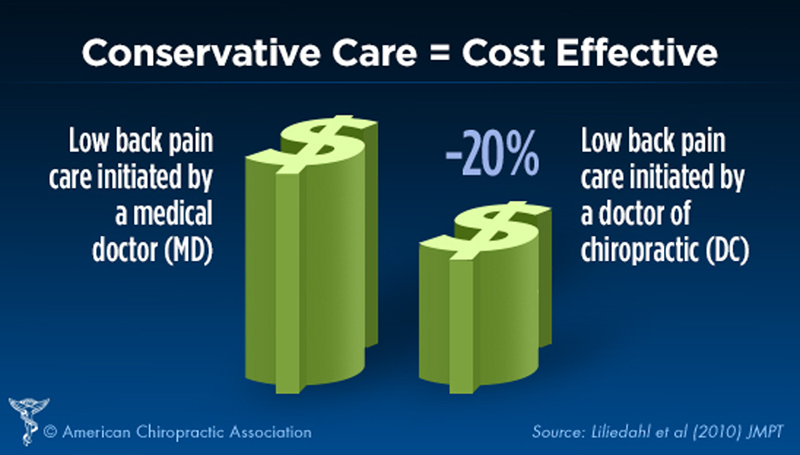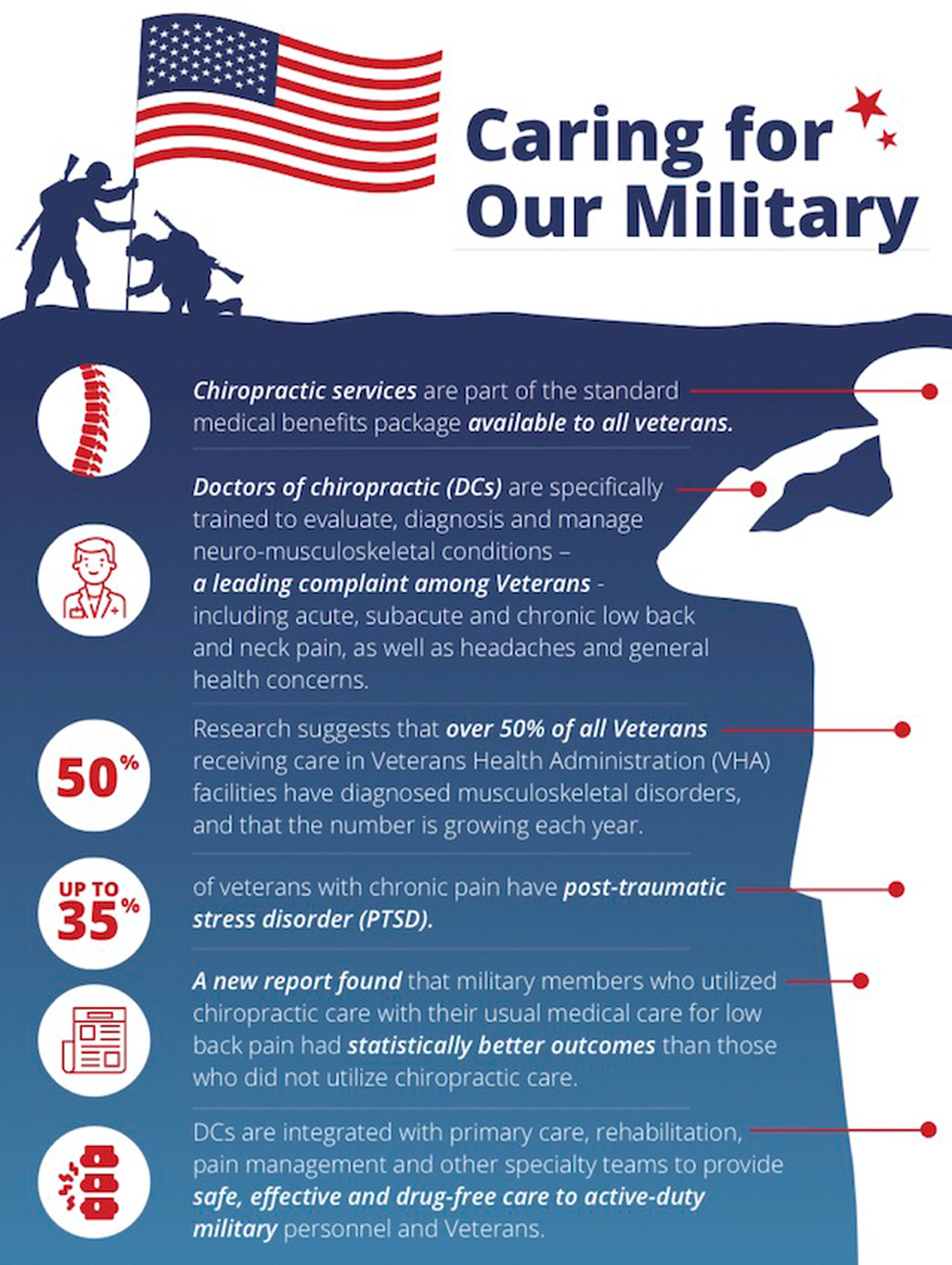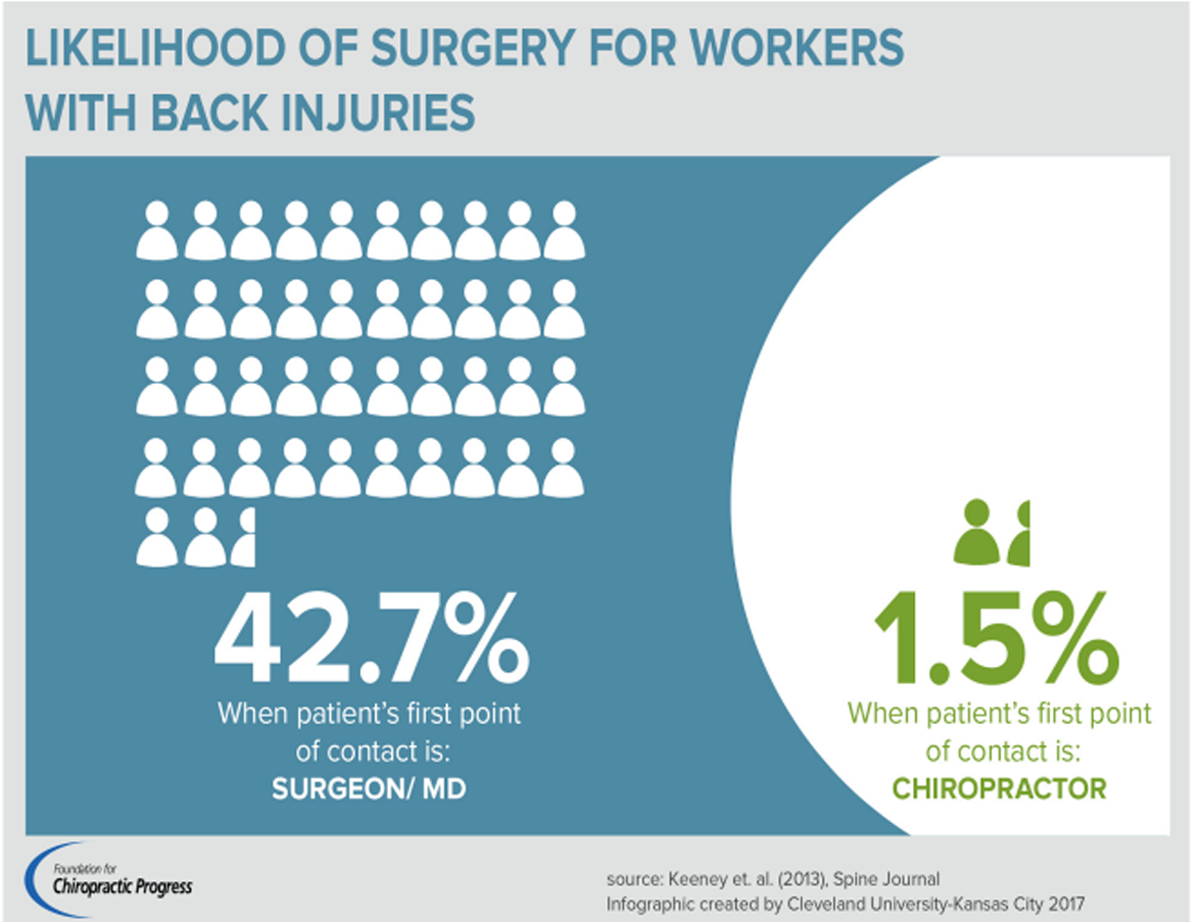Cost-effectiveness of Spinal Manipulation, Exercise, and Self-management for Spinal Pain Using an Individual Participant Data Meta-analysis Approach: A Study Protocol
SOURCE: Chiropractic & Manual Therapies 2018 (Nov 13); 26: 46
Brent Leininger, Gert Bronfort, Roni Evans, James Hodges, Karen Kuntz and John A. Nyman
Integrative Health & Wellbeing Research Program,
Earl E. Bakken Center for Spirituality & Healing,
University of Minnesota,
420 Delaware St SE,
Minneapolis, MN 55455, USA
Background Spinal pain is a common and disabling condition with considerable socioeconomic burden. Spine pain management in the United States has gathered increased scrutiny amidst concerns of overutilization of costly and potentially harmful interventions and diagnostic tests. Conservative interventions such as spinal manipulation, exercise and self-management may provide value for the care of spinal pain, but little is known regarding the cost-effectiveness of these interventions in the U.S. Our primary objective for this project is to estimate the incremental cost-effectiveness of spinal manipulation, exercise therapy, and self-management for spinal pain using an individual patient data meta-analysis approach.
Methods/design We will estimate the incremental cost-effectiveness of spinal manipulation, exercise therapy, and self-management using cost and clinical outcome data collected in eight randomized clinical trials performed in the U.S. Cost-effectiveness will be assessed from both societal and healthcare perspectives using QALYs, pain intensity, and disability as effectiveness measures. The eight randomized clinical trials used similar methods and included different combinations of spinal manipulation, exercise therapy, or self-management for spinal pain. They also collected similar clinical outcome, healthcare utilization, and work productivity data. A two-stage approach to individual patient data meta-analysis will be conducted.
There are more articles like this @ our:
The Cost-Effectiveness of Chiropractic Page and the:
Discussion This project capitalizes on a unique opportunity to combine clinical and economic data collected in a several clinical trials that used similar methods. The findings will provide important information on the value of spinal manipulation, exercise therapy, and self-management for spinal pain management in the U.S.
From the FULL TEXT Article:
Background
Chronic pain is a major public health problem, affecting more adults in the United States than heart disease, diabetes, and cancer combined. [1] Low back and neck pain are the first and third most common chronic pain conditions in U.S. adults [2] with nearly one of three Americans experiencing chronic neck or low back pain in their lifetime. [3] While the prevalence of spinal pain has been stable over the past two decades, the global burden (measured by disability adjusted life years) has increased 42% due to aging and population growth. [4, 5] Roughly 25% of U.S. adults with spine pain report limitations with physical function, 11% report limitations with social function, and 19% report limitations with work, school or household activities [6]. With low back pain ranked first and neck pain fourth in disability worldwide, spine pain has become a burdensome health condition with considerable public health consequences. [4, 5]
The economic impact of spinal pain and associated comorbidities is also substantial. An estimated $88.1 billion in healthcare expenditures (~ 4% of total healthcare spending) was directed towards low back and neck pain within the U.S. in 2013. [7] Diabetes and ischemic heart disease are the only conditions in the U.S. with higher levels of healthcare spending. [7] While direct expenditures for spinal pain are large, total healthcare expenditures are even greater due to comorbidities (such as depression). [3] When total healthcare costs are considered, for example care of spinal pain plus associated comorbid conditions, expenditures increase to 9% of total U.S. healthcare costs (2005 data). [6] In addition, reduced work productivity accounts for a large proportion of the financial burden in individuals with back or neck pain. Lost productivity costs for back pain were estimated at $19.8 billion per year in 2002, with reduced productivity while still at work (i.e. presenteeism) accounting for nearly 70% of total lost productivity costs. [8]
Spine pain management has gathered increased scrutiny amidst concerns about overutilization of costly and potentially harmful interventions and diagnostic tests. Over the past decade the number of epidural injections, opioid prescriptions, and spinal surgeries for back pain has more than doubled with little positive impact on patient outcomes. [9–13]. Annual healthcare expenditures for individuals with spinal pain increased by 95% from 1999 to 2008 largely due to increases in medical specialist expenditures. [14] From 1996 to 2013, the U.S. spent an additional $57.2 billion dollars per year on the management of spinal pain, which represents one of the larger increases in healthcare spending for any condition. [7] While more conservative and potentially less costly alternatives are available to treat spinal pain, including spinal manipulation therapy (SMT), exercise therapy, and self-management, they are often underutilized. An analysis of administrative data from across the U.S. found low back pain patients are more likely to receive opioids (41%) than visit a chiropractor (39%) or physical therapist (34%). [15]
Complementary and integrative interventions may reduce the clinical and cost burden of spine pain. Recent data from the U.S. Medical Expenditures Panel Survey suggests complementary and integrative therapies, including SMT, reduce healthcare expenditures for spinal pain conditions; however, the cost-effectiveness of SMT within U.S. healthcare settings has not received much attention. [16–18] Given the increasing financial and societal burden of spinal pain, and concerns surrounding current management strategies, robust cost-effectiveness analyses (CEA) of SMT and other complementary and integrative treatments for spine pain are much needed. [18–21]
Read the rest of this Full Text article now!






Leave A Comment